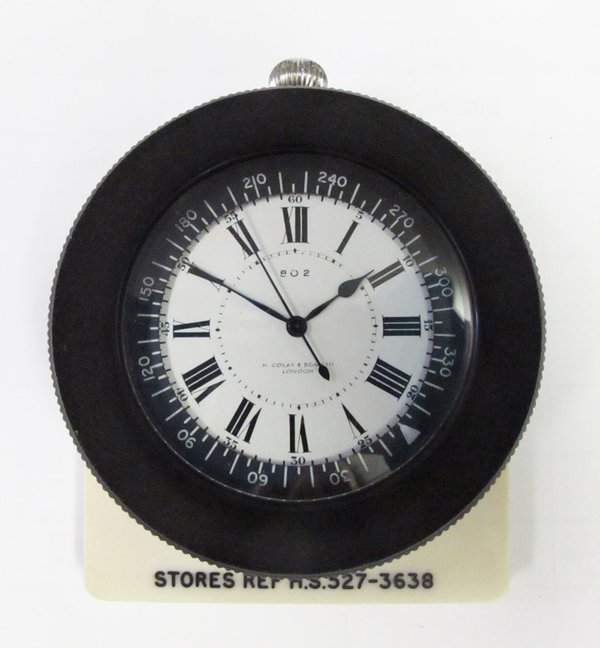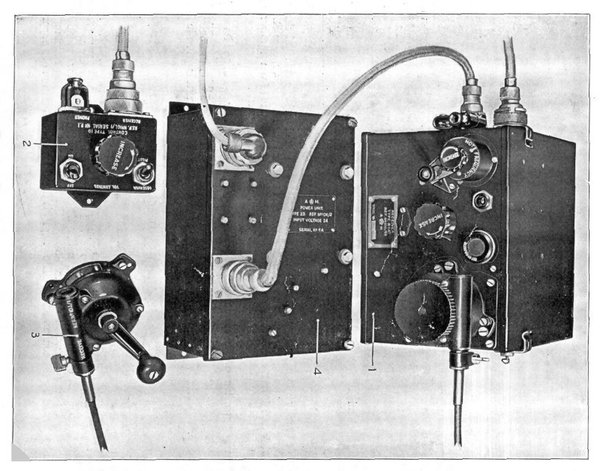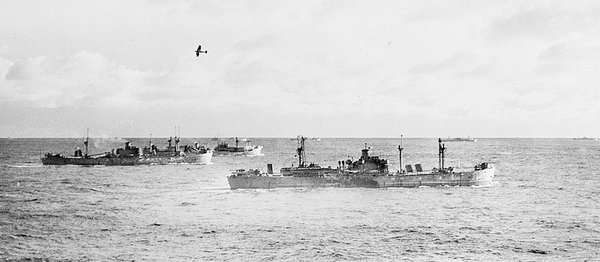Home time
This post was written by Rory McEvoy
As next year’s AHS conference will be shaped by the theme ‘Military Time’, it seems appropriate that this post should follow the military theme and by chance, as with David Read’s recent post, it includes a radio.


There are two HS.4 navigational watches in the National Maritime Museum collection, both retailed by the firm H. Golay and Sons, which were used by the Fleet Air Arm in Fairey Swordfish aircraft during WWII.
We learn from the 1941/1942 Admiralty Manual of Navigation that these watches were known as beacon watches and that they were only to be used in aircraft fitted with an R1147 radio receiver.
The carriers were equipped with a revolving beacon that continuously transmitted second pulses, making a full rotation once per minute. The crucial feature of this system was that the beacon emitted a different sounding signal when it was pointing due north. Prior to launch (these planes were catapulted into the air) the observer would tune the radio receiver to the beacon and set the bezel of the watch so that zero on the outer scale and the tip of the second hand align precisely at the time of the northern signal.

When returning to the carrier, the observer on board the aircraft would turn on the radio and listen to the beacon’s signal. The strongest reception would be experienced when the beacon was pointing directly at the aircraft and using the watch, the aircraft’s position relative to its carrier could be found and the pilot given the course to take.
If we take the watch shown above, for example, as indicating the moment of the signal’s maximum intensity, the aircraft’s position would be approximately SSW of the carrier. The primary benefit was that these slow aircraft could home in on their carrier from up to 100 miles away without sending out radio signals that may betray their position to the enemy.
This ingenious horological adaptation helped to save lives and is just one example of innovation necessitated by war that could be explored at next year’s conference.
If you feel that you can contribute a talk that would fit ‘Military Time’ theme, you are invited to contact the AGM lecture coordinator, Rory McEvoy, Curator of Horology, Royal Observatory Greenwich, National Maritime Museum, Greenwich, London, SE10 9NF, e-mail: RmcEvoy@rmg.co.uk. Papers could explore technical horological development as well the wider implications for both civil and military timekeeping. Please note that the theme is not limited to the First World War, and that the military of course includes the ground, sea and air forces.